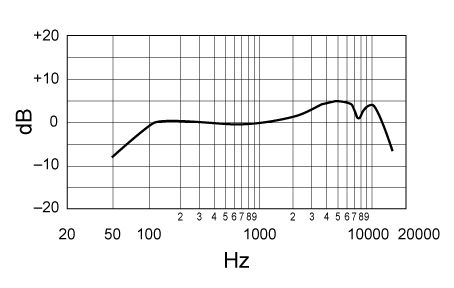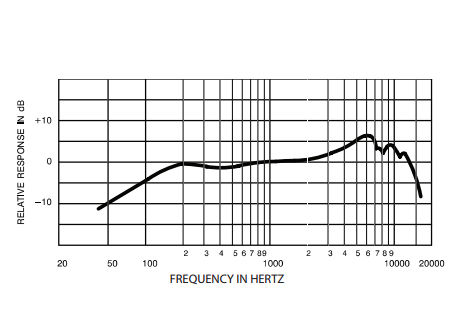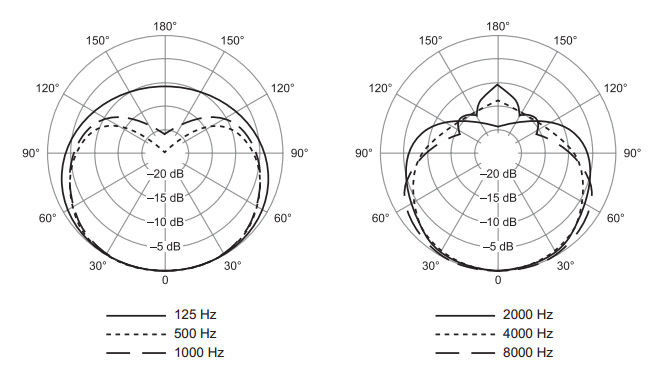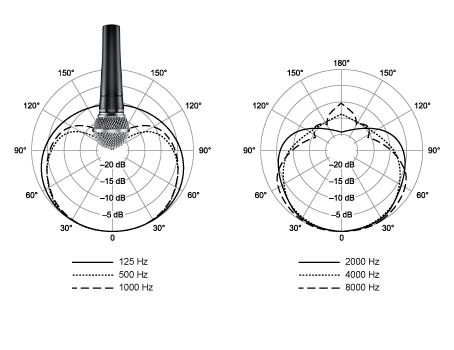Surely they do...for Shure
 Here
Here
Each grille design places the diaphragm of each microphone in a different acoustical environment. The distance from the top of the grille to the diaphragm is shorter on the SM57 compared to that of the SM58, which allows for a
more pronounced proximity effect through closer mic positioning. Additionally, the different resonator/grille assembly design of the
SM57 produces a slightly higher output above 5 kHz.
Actually there are lot of difference beyond the two grills themselves as explained further
HERE a different website using Shure's specs and an explanation of the differences from another site
Here are the differences in bullet form:
- The Shure SM57 has a frequency response of 40Hz – 15,000 kHz, while the Shure SM58 has a frequency response of 50Hz – 15,000 kHz. This means the SM58 offers a better bass roll-off so you can get closer to it with your mouth (part of the reason singers rest their mouth on the mic when singing). The SM57 offers a slight increase in detail at lower levels which is ideal for musical instruments where you need to preserve the bottom-end weight, but not ideal for vocals at close range.
- The Shure SM58 has a removable windshield and integrated pop filter. The Shure SM57 has a very small pop filter and a very thin windshield underneath it. You can buy a windshield if you wish to use it for vocals (recommended).
- The SM58 is slightly thicker and larger than the Shure SM57 and easier to hold
- The Shure SM57 does have a shock mount, but the SM58 has a slightly better one inside to combat handheld movements.
- The SM58 can be heard better at a distance without adding too much room sound.
- The SM57 provides a gritter, lo-fi sound than the SM58 – especially on vocals.
- The SM57 gets boomier the closer you get due to the shorter distance of the capsule from the pop filter. The SM58 has a bass roll-off and is more forgiving when it comes to proximity effect.
- The Shure SM57 is designed for live instrument applications more so than live vocals.
- The Sure SM58 is designed for live vocals, both speech and singing applications.
- You’ll get more plosive noises with the SM57 compared to the SM58 due to the smaller pop filter. These are not necessarily overbearing in a live scenario but VERY apparent in a recording situation unless you use a pop filter.
FREQUENCY RESPONSE DIFFERENCES BETWEEN THE SHURE SM57 AND SHURE SM58
As mentioned above, the
Shure SM57 has a frequency response of 40Hz – 15,000 kHz, while
the Shure SM58 has a frequency response of 50Hz – 15,000 kHz.
Why is this important to know?
This difference in frequency response between the SM57 and SM58 shows you why one is better than the other for vocals, and one is better for instrument recording.
SHURE SM58 FREQUENCY RESPONSE
You’ll see in the image below that the SM58 offers a welcome presence boost at around the 2 kHz to 7 kHz frequency – after that, it starts to taper off. The benefit here is that you hear the higher frequencies as soon as you start singing or speaking. This means your vocal stands out in the mix which is exactly what you need if you’re singing in a band, talking over musicians playing in the background (
perhaps in a worship scenario) or you’re speaking in public and you need to be heard. This presence boost adds, well, presence to your performance and is exactly why it’s relied upon by singers who front bands!
The bass roll-off is extremely important and a key benefit when compared to the SM57 when singing. If you’re like me and you place your top lip on the microphone when singing, the SM58 doesn’t suffer from the unwanted proximity effect that is apparent in other mics with a lower frequency. You can get as close as you want and still be heard clearly. The SM58 will start to get bassier but it won’t sound muddy. The engineer can work their magic on the mix and bring the mids back out for you.
SHURE SM57 FREQUENCY RESPONSE
The Shure SM57 enjoys a tailored frequency response of 40 Hz - 15 kHz. This has been developed to capture the most useable frequencies as anything below 40Hz and anything above 15kHz is hard to actually mix in a live scenario and the human ear can’t really hear it if there are other sounds happening around it, anyway.
Why is this important?
The SM57 is not as sensitive as the SM58, as the presence boost doesn’t kick in until around the 3kHz mark and drops out after 6kHz. This however is useful for cranked guitar and bass amps as well snare drums as it cuts out some of the top-end sparkle that can make your recording sound “washy” and bright. You still get high-end detail, except it’s more about the mids – the part where you get all your detail from!
The low 40Hz frequency offers a very noticeable bass boost which is ideal for recording guitar cabs, snare drums and drum overheads as it gives your sound more “weight” and bass presence. Your recordings sound thicker.
However, if you’re using the SM57 for vocals and you get too close, the proximity effect will kick in and you’ll not only lose the detail of your voice but find that your sound becomes muddy and unclear. It’s great for vocals if you want a lo-fi, natural and gritty sound, you just can’t get as close to it as an
SM58 or Beta 58A and you'll need some microphone control.
One benefit of the SM57 over the SM58 is that the SM57 sounds a touch brighter because of the presence boost. Studio owners and recording enthusiasts love the SM57 for guitars and bass as it can push the mids of your guitar or bass amp to the forefront. In case you didn’t know, the mids section is where all the detail lies in your guitar or bass sound.
This is part of the reason the SM57 is the industry-standard musical instrument microphone. It gives you everything you need and removes all the unwanted frequencies making recording and live mixing a lot easier.
POLAR PATTERNS OF THE SHURE SM57 VS SM58
Both the SM57 and the Shure SM58 have cardioid polar patterns. However, the SM57 is tighter at close range and loses some detail when you move further back.
The SM57’s capsule is almost completely up against the grille, whereas the SM58 has a little more space.
The close mic capabilities of the SM57 is a major reason studio engineers and live sound engineers prefer the Shure SM57 for recording instruments as it completely rejects the off-axis sound, solely concentrating on the source the closer you get whether that’s a guitar cab, bass cab or snare drum.
Both mics have a similar polar pattern when you move back from the mic. This means both mics may be affected by a poorly acoustically treated room if your sound source is further away from the microphone. If you move back you’ll pick up a little room noise which may or may not be a good thing depending on what sound you want.
Again,
this is why the SM57 wins when it comes to close mic’ing, but loses when it comes to live vocals as you don’t want to have your mouth right up against the mic at all times to compensate for the room noise or suffer the proximity effect boom when you have your lip on the mic.
However, if you DO want a lo-fi sound – think “
Breed” by Nirvana or “
Mr Brightside" vocals by The Killers - you’ll love what the SM57 has to offer when recording vocals. Just use a good-quality windshield in the studio!
SHURE SM57 VS SM58 FOR RECORDING AND LIVE
So which mic is better for recording and which mic is better for live use when it comes to the SM57 vs SM58?
Is the Shure SM58 or SM57 better for Live Use?
Based on the different frequency responses we’ve discussed and the SLIGHTLY different polar patterns, both the Shure SM57 and SM58 are perfectly fine to use for live use. However, each mic is better suited to different live sound sources.
What about the SM57?
Because of the built-in presence boost and slightly better low-end detail, the SM57 is better at mic’ing up instruments compared to the SM58 as it retains the weight, the thickness of sound and bass frequencies you need when you’re live mixing a snare or guitar cab, for example. It removes the higher-end detail which is not only harder for sound engineers to mix onstage but is almost impossible to hear anyway. The presence boost brings out the mid-range details and the lo-fi sound provides a “livelier” feel that captures the live qualities of your instrument. When mic’ing instruments up close, it can’t be beaten.
Overall the SM57 is better for live use when mixing instruments.






